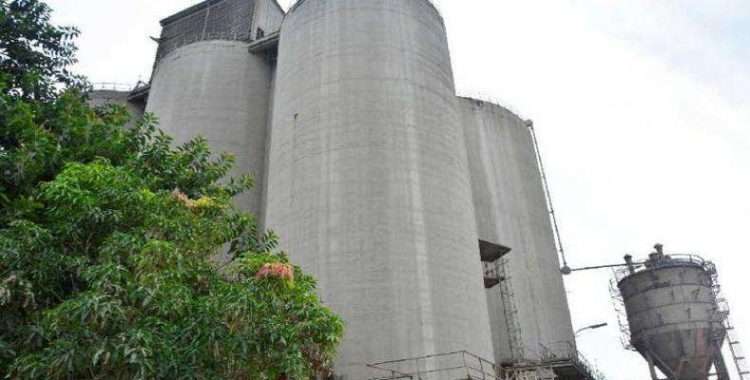The national production of cement at the end of 2021 in Cuba had results lower than those of 1959; 83,000 tons (t) of a plan of only 560,000 were not fulfilled, according to Minister of Construction René Mesa Villafaña. In 1959, more than 600,000 tons were produced. The forecasts predict a recovery of the indices this year, but nothing indicates that they can be fulfilled.
The country does not import cement. Therefore, it must produce as much as it needs to meet the domestic demand; but the accumulation of several factors has put the national industry on a tightrope for a whole decade. The numbers remain very modest and have reached their most critical levels in the revolutionary period.
Among other causes are the technological obsolescence of most of the factories that leads to repeated stoppages; the scarcity of fuels in an industry that consumes a lot; the lack of financing to maintain the equipment and buy new ones; and the labor fluctuation of its human resources.
The figures are eloquent. The highest results of the last decade were recorded in 2012, when the country produced 1,824,800 tons of gray cement. In the following years, production has hovered around 1.5 million tons, until registering its worst numbers in 2020 and 2021.
Contradictorily, these minimum indicators are reported in the midst of a process of modernization of the industry that began in 2018; after the stoppage in 2017 of the Mariel and Cienfuegos enterprises —which represent more than 85% of national production— and the 10-month interruption of the machines at the Siguaney plant.
After what seemed like the most critical moment in the industry in 2017, it was decided to start investing in three of the six plants that produce the product in Cuba — although, “the aspiration (was) to recover the six cement plants distributed throughout the country,” according to Pavel Cansino Ávila, deputy director of the Cement Business Group.
On the island, cement is produced in the René Arcay plant, in Mariel, Artemisa (1918); Mártires de Artemisa plant (1921); José Mercerón plant, in Santiago de Cuba (1955); 26 de Julio plant, in Nuevitas, Camagüey (1968); Siguaney plant, in Taguasco, Sancti Spiritus (1971) and Carlos Marx plant, in Cienfuegos (1980).
The modernization program, explained by Cansino Ávila, would begin with the construction of a new factory in Santiago de Cuba to replace the obsolete José Mercerón.
It also included the parallel development of a broad process of technological modernization in the 26 de Julio that should be extended to Siguaney and that, in both cases, also implied the construction of new plants in practical terms.
The investment foresaw in the short term an injection of more than 700 million dollars in total currency, which, in the words of the official, would double cement production by 2025 and triple it five years later.
Four years have passed since the start of the investment and in just three the new factories were to be ready. The results are still pending.
The plants in Santiago de Cuba and Nuevitas are not finished
In Santiago de Cuba and Nuevitas, new facilities have been built from the ground up since 2018. Their start-up, in the words of René Mesa Villafaña, had to “supply the demand for cement in the east of the country and achieve high levels for export.” Both are now more than a year late in their completion.
The new Moncada cement factory in the province of Santiago de Cuba was strategically located in the southern area of the Abel Santamaría district, between two deposits of raw materials.
In plans, at the start of its operations it would produce around one million tons of clinker (raw material for cement production) and could provide 1.2 million tons of gray cement annually.
But, in 2021, when the plant should have been ready, Mesa Villafaña acknowledged that both the Santiago de Cuba factory and the Nuevitas factory in Camagüey were still “in the foundation stage, civil construction in infrastructure works and technological objects.”
Given the delay with the new construction and to prevent everything from being translated into losses, the minister stated at the end of the previous year that “it will continue to be produced at the José Mercerón factory in Santiago de Cuba.”
For its part, the 26 de Julio plant in Camagüey stopped its machines in 2018 to undergo a modernization process that resulted in the dismantling of the old plant and the demolition of part of its civil works to build a new one in its place.
Located in the industrial sector of the municipality, it was designed with a new dry process production line, with a capacity of 2,000 tons of clinker per day and 750,000 tons of cement per year. In addition, to allow greater use of renewable energy and cut dust losses in the manufacturing process.
Although it has been defined as strategic for the country’s economy, several factors have delayed its completion. Among others, there is the shortage of workers, and the difficulties with the supply of aggregates and steel (in February 2022, a backlog of 5,675 tons of steel was reported missing for the civil works).
Currently, the forecasts are contradictory. Roberto Conde Silverio, first secretary of the Communist Party of Cuba in Nuevitas, has previewed that in the second half of the year the 26 de Julio will start producing the first tons of raw cement.
But the minister of construction has stated that the “civil works (in Santiago and Nuevitas) must be completed this year to start the technological assembly and start up next year.”
The deputy director general of construction of the Ministry of Construction, Inalvis de la Calle Sablón, has been even clearer in acknowledging that “hard work remains to achieve its culmination in 2023.”
The investment in Siguaney was never seen
In 2018, the Siguaney cement plant reached the pre-investment phase, with 90% certainty of receiving funds worth more than 140 million USD, for the creation of a new factory next to the current one, with Chinese capital. The project included the supply of the necessary spare parts for the coming years.
The Sancti Spiritus industry was originally designed to work with four kilns with a daily capacity of 500 tons of gray clinker each. But as projected, the new Siguaney would be a dry process, much more technologically and energetically efficient; with a single oven, hybrid type; with a daily capacity of 1,500 tons of gray clinker and 1,000 of white; automated and much more ecological.
The execution of the work was to begin at the end of the third quarter or the beginning of the fourth of 2018 itself. And the Asian investors would become “responsible for the project, the supply, the assembly and the construction,” as Saúl Rodríguez, technical director of the enterprise, said at the time.
However, the winds changed. The investment never materialized. In 2021, engineer Saúl Rodríguez himself explained to the newspaper Escambray that the modernization process of the new plants in Santiago and Nuevitas “was going to be extended to Siguaney” but since there was no “financial capacity to assume a third factory…priority was given to the east of the country, which is where there was more demand and less supply.”
At the end of August 2022, his officials agreed that his old equipment prone to breakages, stoppages, together with the lack of supplies and tools, would make it difficult for it to reach the 80,000 tons planned for the current year.
The only alternative to improve production rates is an investment process, like the one it almost had, but today it is no longer in sight.
In terms of cement production, Cuba is far from its best years: 1989, for example, when the highest figure in history was reached: 3.789 million tons.
The production plan for the current 2022 is just 1.4 million tons. And it can only be achieved if the investments in the new factories are completed, which, with the delays reported at this point in the year, does not seem possible.
Meanwhile, the national demand for cement amounts to nothing more and nothing less than 4 million tons. To which are added today the damage caused by Hurricane Ian to Cuban infrastructure, accounting for more than 70,000 affected homes and other total and partial damage of state facilities, roads, public spaces.
Four years have passed since the start of the investment program in Cuban industry. At a distance of three from 2025, when national cement production was expected to double, Cuba is far from having anything to support such forecasts.
Investments in this vital industry do not close cycles or in the worst cases, as in Siguaney, are still pending. The dilemma of losing time and money also harasses the production of cement. It seems that no aspect of development on the island can escape this tragic fate.










